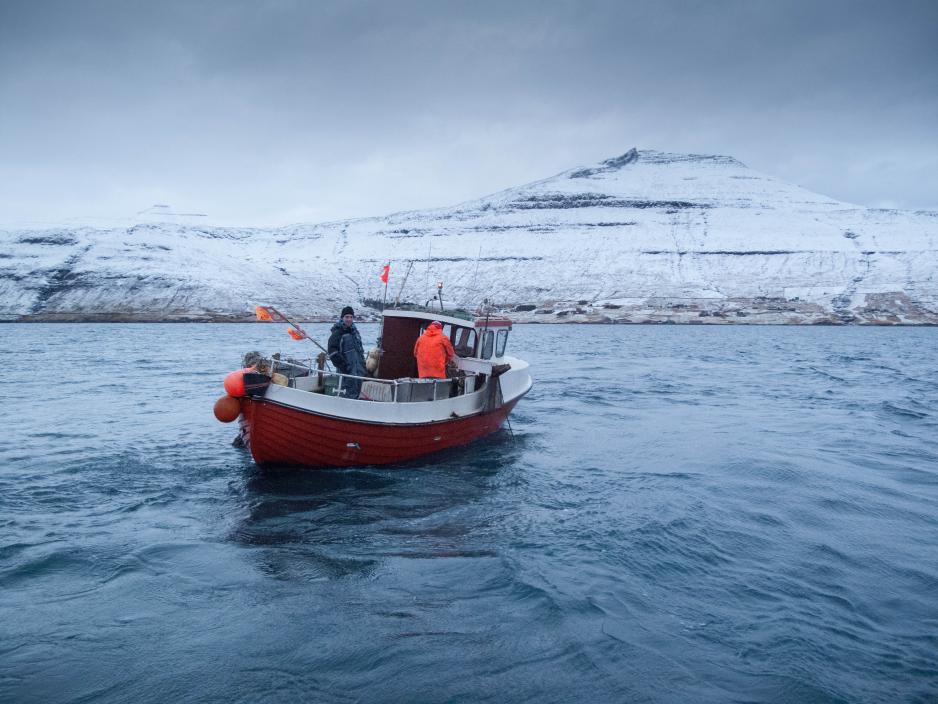Faroese Food Rises to Michelin Prominence

Move over Paris take - a food revolution is underway in the Arctic, with 2017 bringing the first Michelin Star to the Faroese Islands.
Traditionally, food fanatics scout the streets of Paris for fresh French pastries and trek through the farmlands of Modena, Italy in search of the best Parma hams. But a new stop might be added to next year’s European food tours: the Faroe Islands.
In March 2017, Koks, a cozy but modern restaurant in the town of Tangafjøður, not far from the Faroes’ capital of Tórshavn, received the islands' first Michelin Star for its 17-course Nordic tasting menu. The restaurant boasts of taking an innovative twist on traditional Faroese fare and produce – a tough task for an island chain that can only grow root vegetables and whose customary cuisine relied predominantly on fermentation.
"At KOKS, our aim is to create the ultimate dining experience. An experience strongly influenced by our deep-rooted Faroese traditions and the remarkable local produce found at our doorstep. This is our strength, and often our job is simply to let the extraordinary produce speak for itself," the 26-year-old head chef, Poul Andrias Ziska, said in a press statement about the award.
The Michelin Guide, founded in 1900 as a European hotel and restaurant reference guide, awards stars for excellence to a select few establishment around the world. The stars have become a hallmark of fine dining and quality restaurants. One star, which is what Koks received, is bestowed for "a very good restaurant in its category, offering cuisine prepared to a consistently high standard."
A big food year for the Faroes
The Michelin star may be the most recognizable award to have made its way north, but it isn’t the only accolade Faorese chefs received in 2017.
In the 2017 competition for best Nordic food known as ‘Embla,’ the Faore Islands stole the show. Faroese chefs, restaurants, and food industries won prizes in three of seven categories, including top Nordic Food Destination 2017 (Heimablídni); Best Nordic Food Producer (Dímunargardur); and Nordic Food Artisan of the year (Leif Sørensen). The awards, presented every two years, are meant to strengthen a shared Nordic culinary identity and culture, and increase interest in Nordic food outside the region.
The culinary revolution that brought the successes of 2017 began more than ten years ago, when Nordic chefs, food writers, and other food professionals gathered together in November 2004 to develop a new Nordic food culture. The resulting manifesto, which included Faroese authors like Chef Leif Sørensen, focuses on "the purity, freshness, simplicity and ethics we wish to associate to our region" in food that combines "local self-sufficiency with regional sharing of high-quality products."
With only 50,000 residents and some 80,000 sheep, the Faroe Islands has grown into a hotspot for this new type of Nordic fare, taking it on as a core part of its modern national identity. By combining products of the Faroe Islands and contemporary gastronomy methods, the Islands present themselves as traditional but modern, locally-cultured by creative young chefs.Braving the mold
Like most Arctic cuisine, the Faroe Islands rely historically and heavily on aged fermentation of its meats, cheeses, and vegetables, colloquially known as ræst. Dishes like Skærpekød, sheep’s meat that is wind dried, cured, and fermented over 5-9 months in special wooden sheds called hjallur, are local favorites that New Nordic restaurants have reinvented and paired with more modern inventions like rhubarb compote.
Fermented dishes aren’t the only delicacy attracting foodies to the Faroes. Langoustines, termed as ‘the new foie gras’ are shrimpy crustaceans that made their home in the waters around the islands. The shellfish are known to be as big as lobsters, and New Nordic restaurants serve them up in innovative styles for their worldly patrons. And once a year, travelers can enjoy the Faroe Bank Cod, an ultra-local delicacy that can only be served three nights a year by law. While the Bank Cod is protected by law and cannot be commercially fished, a research vessel is allowed to conduct scientific research once each year during the month of March. Once the scientists are finished with their world, the fish are sold to a single restaurant – Aarstova, whereupon it is served up fresh to locals and international visitors alike.
Arctic foods as a regional export?
At the 2017 High North Dialogue Conference in Bodø, Anders Oskal, Director of the International Centre for Reindeer Husbandry, proposed a unique economic development platform for Arctic Indigenous peoples: turn the north’s local food and culinary arts into a regional specialty. Taking the example from the national export strategy of Italy for its regional specialties, Mr. Oskal argued that uniquely-Arctic foods, like reindeer, could prove similarly lucrative for Arctic communities while simultaneously catalyzing traditional knowledge around herding, producing, and cooking.
With a Michelin star and several culinary awards under its belt in 2017, the Faroe Islands might well be making Mr. Oskal’s hopes for a world-renowned Arctic cuisine into a reality.
